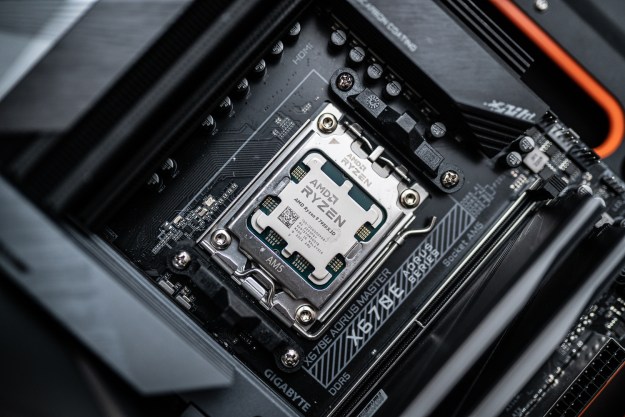The upcoming AMD Ryzen 7 5800X3D was just benchmarked ahead of its release, but it might be too early to fully trust these scores.
Although the CPU failed to impress in these synthetic benchmarks, the real test is still yet to come: We need to see the Ryzen 7 5800X3D perform in a gaming setting.

The benchmarks come from the Peruvian website XanxoGaming, which was able to get its hands on AMD’s latest 3D V-Cache offering. AMD predicted that the 5800X3D should offer an up to 15% boost in gaming over the 5800X thanks to its massive stacked L3 cache. However, this increase doesn’t seem to show up in benchmarks very well, as proven by the tests posted by XanxoGaming.
As a reminder, the processor is going to be the first of its kind, bringing a massive 96MB L3 3D V-Cache, but at the cost of lower clock speeds compared to its predecessor. The Ryzen 7 5800X offers clock speeds of 3.8GHz (base) and 4.7GHz (boost), while the 5800X3D maxes out at 3.4GHz and 4.5GHz, respectively. The new CPU also doesn’t support overclocking.
The processor was tested on a platform that included a Gigabyte Aorus Master X570 motherboard with F36C BIOS, which should be optimized for the Ryzen 7 5800X3D. The Windows 10-based system also included 16GB of DDR4-3200 RAM and an Nvidia GeForce RTX 3080 Ti graphics card.
XanxoGaming tested the AMD Ryzen 7 5800X3D in Geekbench, CPU-Z, and Blender. In Geekbench, the CPU scored 1,639 points in single-core and 10,498 points in multi-core tests. This is a lower single-core result than its predecessor, the Ryzen 7 5800X, which scored 1,671 and 10,339 on average. In CPU-Z, the new processor scored 617 and 6,506 points, which (as VideoCardz points out) is lower than the Intel Core i9-12900K reference data.
The upcoming 3D V-Cache chip fared better in Blender. It proved itself to be up to 11 percent faster than the 5800X. However, it’s hard to gauge real-world performance as the samples are limited.

Technically, the CPU should not be getting benchmarked just yet, as it doesn’t release until April 20. It’s possible that early samples may have been sent out to reviewers, but all of that would be under embargo until the release day. However, XanxoGaming was able to obtain the Ryzen 7 5800X3D ahead of time, benchmark it, and then release the results to the internet at large.
Curiously enough, the website didn’t have to break any agreements with AMD in order to obtain and benchmark this processor. As XanxoGaming explains in its early review of the CPU, the processor is already available for sale in Peru, thus the tested copy is not a sample and it is, in fact, the retail version of the AMD Ryzen 7 5800X3D. XanxoGaming has also been blacklisted by AMD and doesn’t receive samples ahead of time.
These scores don’t sound very encouraging for the AMD Ryzen 7 5800X3D, but it’s important to remember that it has to be tested in gaming before any judgments as to its performance can truly be made. It’s very likely that in a gaming setting, the CPU will match up to AMD’s promises. XanxoGaming promised to test the processor further and update the review as it does so.
Editors' Recommendations
- 4 CPUs you should buy instead of the Ryzen 7 7800X3D
- The one AMD 3D V-Cache processor you should avoid at all costs
- The gamers have spoken: AMD obliterates Intel in CPU sales
- AMD’s latest V-Cache chip proves to be cheap, fast, and perfect for gaming
- AMD’s upcoming Ryzen 5 5600X3D could completely dethrone Intel in budget builds



